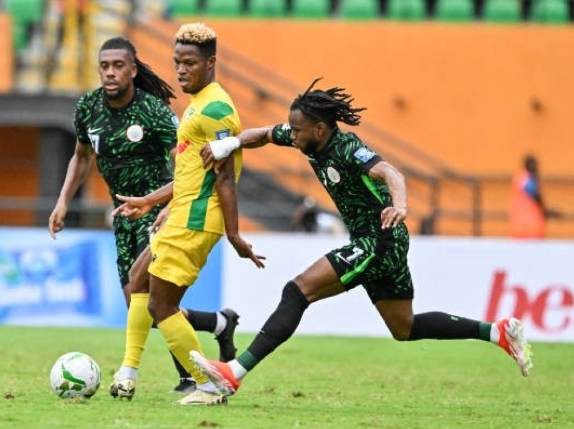
In ancient times, soldiers on the battlefield occasionally kicked the severed heads of their enemies, an act that gradually evolved into a primitive impulse. Cuju, the ancient sport, sprouted as early as the Spring and Autumn and Warring States periods, became a means of strengthening the body in the Han Dynasty, and specialized cuju organizations and performers emerged in the Song Dynasty. In the sculptures and murals of the ancient Greek and Inca civilizations, we also see images of people kicking round objects with their feet. It wasn't until 1863, when England's first soccer association was formed (the English Football Association), that the rules of the game were standardized and soccer became a truly popular mass sport.
The prosperity of sports cannot be achieved without the investment of social resources. With limited national resources, how can we stand out in the competition? The answer is to concentrate resources on some cold and niche sports, such as table tennis and diving in China, archery in South Korea, and weightlifting in Iran and North Korea. When the system matures and develops high-level athletes, then gradually cultivate the sports culture and mass base. The sports and entertainment industries are inherently closely intertwined, all determined by the economic base. When we talk about soccer, we can't help but mention the Chinese men's soccer team, which brings both joy and worries to people. China's men's soccer team has not always been in the doldrums, at least a few decades ago, China's men's soccer team in the Asian game was at the top level, and even got Chairman Mao's favorable opinion. However, to this day, even Syria, Iraq and Thailand are hard to beat, which undoubtedly requires us to find reasons from ourselves. On the other hand, China's women's soccer team, founded in 1983 and known as the "Clanging Roses," has brought countless surprises and touches to Chinese fans.
The early years of the Chinese women's soccer team coincided with the women's volleyball team's international sweep. Despite the difficult training conditions and the attention of few people, they shocked the world when they took the field. 1986, the Chinese women's soccer team won the Asian Cup with a clean sweep. 1986 to 1999, the women's soccer team won seven consecutive titles in the Asian Cup; the women's soccer team won three consecutive titles in the Asian Games in 1990, 1994, and 1998; and the Chinese women's soccer team was named Asia's Best Sporting Team for three consecutive years in 1995, 1996, and 1997. The Chinese women's soccer team was named the best sports team in Asia in 1995, 1996 and 1997. In the late eighties, Liu Ailing, Sun Wen, Zhao Lihong and Gao Hong joined the team one after another, and the main lineup of Chinese women's football team took shape. In the nineties, the Chinese women's soccer team stood out in the international arena. 1994 USA Women's World Cup Runner-up, 1996 Atlanta Olympics Women's Soccer Runner-up, 1999 France Women's World Cup Runner-up. However, into the new century, China's women's soccer players are not enough youth, the strength of a sharp decline. Low attention, poor training conditions, low income and insufficient reserve force seriously hindered the sustainable development of women's soccer. After that, the Chinese women's soccer team was swept by Germany 8-0 in the Olympic Games, and hovered in the trough for more than a decade. 2006, won the Women's Asian Cup again. in April 2018, the women's Asian Cup third place. In fact, it is not easy for China's women's soccer team to maintain its current level of competition. Just look at the soccer population reserve, women's soccer youth training is struggling. China's economy has gone up, but the children are sleeping later and later. There is no time to play soccer between classes, after school continue to pick the light to do homework, even if the weekend does not go to class, parents are crazy to enroll in tutorial classes, so that children learn to dance, play the piano, how many parents are willing to cultivate children (especially girls) to play soccer?
America's "soccer moms." Women's soccer has been expanding at a rapid pace in the United States since 1991, when the U.S. team won the inaugural Women's World Cup. Currently, there are 18 million soccer players, including 7.5 million women. The population of women's soccer in the U.S. is as high as 3 million, a number that is beyond the reach of China's women's soccer team, which has only 1,000 registered players. With the rise of the American middle class after World War II, sports (especially team sports) were emphasized in the education of children as a way to learn the competitive beginnings of their future lives. Children play soccer, mothers are willing to go back and forth, there is a "soccer mom". These mothers, most of whom are between 35 and 45 years old, dress casually, don't wear makeup, and drive their children to the stadium for practice after school in minivans or SUVs. In terms of work soccer, the current U.S. women's soccer league is called the "National Women's Soccer League (nwsl)," with a total of nine teams that play at U.S. colleges and universities. Each year, the U.S. Soccer Federation (USSF) publishes a 52-player national team roster. Players on the national team roster are paid by the U.S. Soccer Federation. Major League Soccer has a salary limit of up to $200,000 per year. In the soccer world, where female athletes generally do not earn much, the U.S. women's soccer team has become an "anomaly" thanks to its strong commercial package and the support of the federation.
Japanese "Yamato Nadeshiko" In 1991, the Japanese women's soccer team competed in the inaugural Women's World Championships in Foshan, Guangdong Province, where they lost to Brazil, Sweden, and the United States in consecutive group stage matches, not winning a single match, not scoring a single goal, and losing by 12 goals, thus ending their first trip to the World Championships in disgrace. Japanese women's soccer is conducted through schools. 1981 saw the official establishment of the Japanese women's national team. At the end of the 80's, the "Japan Women's Football League" was established, which was a very amateur league. 91 World Championship lost all three matches, the Japanese women's football team realized that there was a huge gap between themselves and the top level of the international community, which became the starting point for the development of the Japanese women's football team. 1994 the women's football league was renamed the "L-League" for short. In 1994, the women's soccer league was renamed as "L-League", corresponding to the newly established men's soccer league J-League, with L being the first letter of the English word "lady". At that time, Japanese women's soccer clubs basically relied on corporate funding to survive, in the economic boom period, a women's soccer club is nothing to corporations, but in 1998, Japan's economic bubble burst, the whole country entered the "disappearing thirty years" period, women's soccer clubs for corporations, became a burden, and in 2003, Japan's women's soccer clubs fell into a state of crisis. In 2003, Japanese women's soccer was at its lowest point in history. The Japan Football Association (JFA) joined forces with prefectural associations to bring women's soccer back to schools, establishing women's soccer clubs and interest classes in schools, and high school women's soccer tournaments between schools. "Nadeshiko (なでしこ)" is an herb that describes the gentleness and elegance of Japanese women in Japanese. In order to expand the influence of Japanese women's soccer, the Japanese women's soccer team, which had a good performance at the Athens Olympics, was named "Yamato Nadeshiko," and the L-League was renamed the Nadeshiko League. The average height of Japanese women is only about 160cm, and the strength of confrontation is far inferior to that of European and American players. At the individual level, Japanese female soccer players can hardly find any hardware advantage. The JFA decided to put women's soccer on the same passing path as men's soccer. From the national team to the club, from the adult team to the ladder team, we follow the same set of training syllabus for tactical training. By logging in to the JFA, you can find detailed data on the Japanese women's soccer team's various matches. This includes information on the women's high school league in the school soccer category, and even tournaments at the 30- and 40-year-old level and above. In addition to the intention of the professionalization of women's football league, the Japanese women's football also encourages its own players to stay in the world, to the United States or Europe, these high-level leagues to exercise their own "Overseas Strengthening Designation Guidelines", all the women's football to go to the top ten international rankings of the national league football players in Japan, you can get 200,000 yen of the first reserve and 10,000 yen per day of living Subsidies. Since the league is not professionalized, the vast majority of Japanese women's soccer players have another job. A life of working during the day and training at night is basically their norm. In the 2011 Women's World Cup in Germany, the Japanese women's soccer team, which was not favored by anyone, made it all the way to the final. Facing their old rivals, the U.S. team, which they had never beaten before, they fell behind twice and then tied the game twice, and finally beat the U.S. team in the penalty kicks, and won the World Cup title at one stroke.
On March 22, 2021, bbc and sky announced earlier that they had reached an agreement with the FA: they decided to buy the broadcasting rights for the Women's Premier League for a total of £24 million (R210 million) for a three-year contract from 2021 to 2024. This is the largest television broadcast contract in the history of women's soccer. The Women's Premier League is on its way to becoming the number one international women's league level, following the example of men's soccer.
Put in 20 years ago, whether it is the league or the national team, Chinese women's football is "hanging" England women's football. As a long-term Asian women's football first league, women's football Super League television broadcasting rights, originally hoped that in 2015 after the soccer reform can be sold at a good price. The result is that the ambitious LeTV won the title sponsorship, commercial development and signal production rights for the five seasons of the Women's Super League from 2015-2019, and then there is no more. 2019 Women's Super League started in July and ended in September. 2020 Women's Super League started in August and ended in October. The Women's Premier League has a very low televised value and does not contribute much revenue to the clubs. With the European soccer giants, began to pay attention to the women's soccer "blood transfusion", Chinese women's soccer ball will be more and more difficult to play. A Beijing Guoan match usually has about 40,000 people, but a Beijing women's soccer match is often watched by a hundred or so people. The Chinese women's soccer team has competed in the World Cup eight times and entered the Olympics five times. According to the latest international rankings, China's women's soccer team is ranked 14th, and China's men's soccer team is ranked 77th.Until 2015, the monthly salary of most female players was 3,000 yuan; the training ground is often the land of withered grass and weeds; going out to the game, the food is three veggies and one meat; living in a small room with moldy floors, but also three or four people squeezed together, and sometimes even the basic hot water can't be supplied.
Competitive sport is, to put it bluntly, still a resource to be financed.The 2019 champions, the Jiangsu Suning women's soccer team, are expected to return to the Sports Bureau as Suning pulls out of the money, while the triple champions of 2016-18, the Dajian Quanjian, have been disbanded. Without broadcast revenue, and with the tournament system after the outbreak costing clubs ticket revenue, on-site advertising revenue, how are clubs going to make a profit? How can the club make a profit? How can it ensure the stability of the team and the normal training of the players, and how can it attract more fresh blood to join the soccer business? It's really hard for our "Clanging Roses", I'm cheering for you!
China Women's Soccer Group Match Schedule is as follows: July 21 vs. Brazil (Miyagi, Japan) July 24 against Zambia (Miyagi, Japan) July 27 vs. Netherlands (Yokohama, Japan)






























